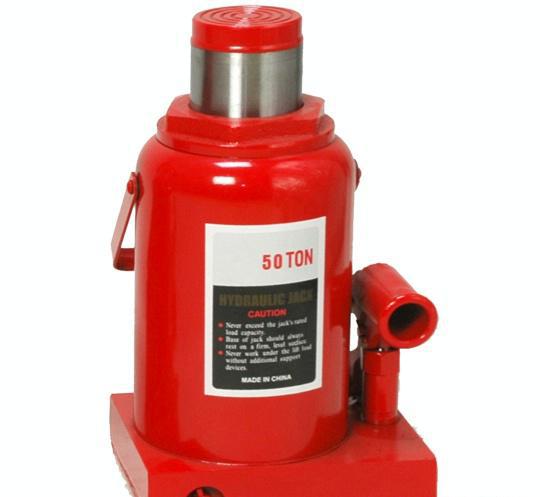Operation procedures of hydraulic jack

1. Hydraulic jacks must be cleaned and refueled according to the instructions. For vertical hydraulic jacks, they should not be used sideways or inverted.
2. For the stress point of the jack to lift must be strong enough to prevent deformation and damage.
3. Before use, check whether the parts of the jack are damaged. If the screw and nut are cracked, it should be prohibited. Check whether the piston valve is good and the oil in the fuel tank is sufficient. If oil leakage or mechanical failure is found, it should be replaced immediately.
4. When using hydraulic jacks, workers are forbidden to stand near the jack safety bolts. If the safety bolts are damaged, it should not be used.
5. The object can not be placed on the jack for a long time.
6. Do not sleeve the tube on the rocker of the jack, or use any other method to lengthen the handle.
7. The top height shall not exceed the limit mark line. If there is no mark line, it shall not exceed 3/4 of the screw rod buckle or piston height. Spiral thread or rack wear up to 20% is strictly prohibited.
8. When lifting heavy objects, the weight should be slightly raised first, then check whether the bottom of the jack is stable. If it is slightly inclined, it must be re-adjusted until the jack and the weight are vertical, stable and firm. When it is raised to a certain height, it should be padded under the weight. After the position is placed, the weight will be padded.
9. When lower the jack, it should be slowly instead of suddenly drop.
10. When several jacks jack up a heavy object at the same time, there should be someone command to keep the lifting up and down simultaneously, to prevent uneven force and accident occurs.
11. When jacking a heavy object, it is necessary to confirm the center of gravity of the object; when two or more jacks are lifting a heavy objects, try to use same jacks, and the force should be uniform and the jacking speed should be the same.
12. The jack should be placed in a flat and solid place, and the mat should be flat. A wooden mat should be placed between the jacks and the jacking weight, and the top position must be solid.
13. The jack must be used according to the specified load-bearing capacity. It must not be overloaded. It must not be extended or operated beyond the specified number. The maximum working stroke should not exceed 75% of the total height of the screw or piston.
14. Do not bear the load for a long time. The speed of descent must be slow during use, and it is strictly forbidden to drop suddenly under load.
15. The jack should be regularly maintained. When storing, apply the anti-rust oil to the surface of the body, and return the lifting part to the lowest position for safekeeping.
16. Keep the jack clean and store it in a dry, dust-free place. Do not store in a damp or open air. Clean the jack before use, check the piston lift and whether the parts are flexible and reliable, and whether the oil is clean.
17. The inside of the hydraulic jack, screw jack and rack jack should be kept clean to prevent the mud sand and debris from mixing and causing wear and reduce the service life.

